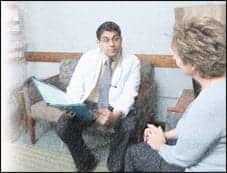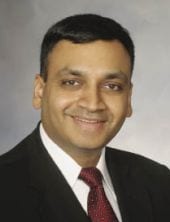 |
As home sleep testing (HST) becomes more widely embraced, there will inevitably be more pressure from health insurers to employ HST for OSA diagnosis. Diagnosing increasingly prevalent OSA is beneficial for the health of those with the disorder, but as HST usage grows, other less common sleep disorders, such as narcolepsy, could go unidentified.
Narcolepsy can be present with or without OSA. The treatments are, of course, very different and depend on thorough testing. Employing HST requires careful patient selection. If physicians are not diligent in HST application, the results could be harmful to patients. For example, if a patient has both narcolepsy and sleep apnea, the result of the home test for OSA will be positive, and the patient will probably be treated with CPAP. Coexisting narcolepsy may not be diagnosed if the treatment improves the patient’s excessive daytime sleepiness (EDS)—characteristic of OSA and narcolepsy. However, some or all of the remaining five symptoms of narcolepsy will likely remain after treatment for OSA begins.
Those five symptoms are cataplexy, disrupted nighttime sleep, hypnagogic and hypnopompic hallucinations (vivid, realistic, and often frightening dreams upon falling asleep and waking), sleep paralysis (a temporary inability to move upon waking), and automatic behavior, ie, performing a routine task without conscious awareness of doing it.
After EDS, cataplexy is the second major symptom of narcolepsy and is often present. It is a sudden loss of voluntary muscle control, usually triggered by emotions. Medications taken for EDS do not help with cataplexy symptoms. The differential treatment of narcolepsy is related to the fact that narcolepsy is a neurological disorder very different in cause from sleep apnea, even though some of the symptoms (particularly EDS) look the same.
| Stay updated on home testing policy by subscribing to Sleep Report. |
If the sleep specialist does not consider narcolepsy as a primary or secondary diagnosis, the above unique narcolepsy symptoms will not be treated, which in turn can have an adverse effect on the patient.
MRS K’S MISSED DIAGNOSIS
Mrs K is a hypothetical 48-year-old patient from Massachusetts who regularly sees her family doctor for her sleep problems, which consist of not sleeping well and being very tired and sleepy during the day. She also has had complaints about feeling “weak” at times. She has told her doctor that her sleep problems have escalated. She has had the same family doctor for 20 years, and the doctor knows her entire family. The doctor had previously prescribed several medications over the years ranging from antidepressants to sleeping pills, but nothing really helped. Mrs K is a hard-working farmer’s wife and has three children. The doctor has told her many times that she is just very busy and needs to relax more.
Mrs. K came in a few weeks ago with more complaints about fatigue, poor sleep, and “weakness.” On top of that, her husband cannot sleep because of her excessive snoring and has moved out of the couple’s bedroom. Mrs K is 5 feet, 5 inches tall and weighs 280 pounds, significantly overweight.
Her family doctor sent her to a sleep specialist. The sleep physician immediately suspected this to be a “typical” case of sleep apnea and gave her instructions for a home sleep test. The test was positive, and Mrs K was prescribed a CPAP device and a stimulant medication. Her EDS improved dramatically, but her “weakness” became worse. Sometimes she even fell to the floor. She started to fear driving and going out in public. Her family doctor decided that these were menopausal symptoms, so he started her on hormone replacement therapy (HRT). Her symptoms did not improve. Next, she was sent to a psychiatrist. The psychiatrist put her on an SSNRI and her “weakness” improved. Finally, everyone thought the diagnosis was complete: Mrs K had sleep apnea with depression. Even though Mrs K had never felt depressed in her life, she accepted this diagnosis. She continued to experience some EDS, which was attributed to her weight. However, after 1 year on the antidepressant, she felt good and energetic and wanted to see if she could stop taking it.
On the second day without the antidepressant, her “weakness” returned and this time she collapsed completely to the floor every time she became excited about something. Now her family doctor thought it was time to see a neurologist. This could be epilepsy, he thought.
Mrs K saw a neurologist at a teaching hospital. The neurologist listened to her long story. In addition to the weakness, she told him about her horrible nightmares. She mentioned that she has had them her entire life, but she did not really pay attention to them because her husband always said that they were the result of her being a nervous person. She also mentioned that she feels unable to move sometimes after she wakes up, but she does not worry about this too much.
The neurologist decided it was time for her to have an overnight sleep test. She first protested, saying that her sleep was being treated with a CPAP machine and stimulants.
He called for an overnight sleep polysomnogram (PSG) and a daytime nap test or Multiple Sleep Latency Test (MSLT). The result of these tests indicated that Mrs K had narcolepsy as well as sleep apnea. In all these years, no one had ever mentioned the possibility that she had narcolepsy.
In addition to the above sleep tests, a genetic blood test can be done to determine predisposition to narcolepsy, although this test is not diagnostic in itself. There is also a new test that measures the level of hypocretin (HCRT) in cerebrospinal fluid. The HCRT test is not commercially available at this time but may be available through participation in certain research studies. The absence of hypocretin is diagnostic of narcolepsy with cataplexy. However, narcolepsy without cataplexy cannot be ruled out when HCRT levels are within normal range.
This illustrated case could be a very “typical” history for someone with narcolepsy. If a patient presents with EDS and HST is performed with a positive result, treatment will be started for OSA. Unresolved EDS may be attributed to poor patient compliance or to suboptimal response to CPAP therapy when in reality there is another sleep disorder present. The likelihood that narcolepsy will escape diagnosis rises if cataplexy, the only symptom unique to narcolepsy, is not present. The same possibility of failure to diagnose narcolepsy can occur when a patient has narcolepsy but not OSA, in which HST occurs and the results for OSA are negative. If EDS is regarded as the only symptom (and in some cases of narcolepsy, it is, initially, the only pronounced symptom), the diagnosis of narcolepsy may be missed.
THE RIGHT TEST FOR THE RIGHT PATIENT
For a select group of patients, HST makes sense.1 To identify this group of HST-eligible patients, the American Academy of Sleep Medicine (AASM) developed clinical guidelines. These provide, in general, that HST should be used only in limited cases with respect to patients evidencing clear symptoms.
With respect to OSA, a primary focus of sleep testing, the AASM’s guidelines for the use of HST in diagnosis recommend that HST be used only in the context of a comprehensive sleep evaluation and for the following patients:
- Those with a high pretest probability of moderate to severe OSA.
- Those with no significant comorbid medical condition. Examples of comorbid conditions include moderate to severe pulmonary diseases (cystic fibrosis, pulmonary fibrosis, active asthma, COPD), congestive heart failure, and neuromuscular diseases (ALS, multiple sclerosis, Parkinson’s disease).
- Those suspected of having no comorbid sleep disorder other than OSA.
- Those unable to be studied in a sleep laboratory.
- Those who need to be monitored after being treated, post-diagnosis, by non-CPAP treatments.
For those approved under these guidelines and who are eligible through their insurance coverage, either HST or a laboratory test will be ordered.
OPENING YOUR EYES TO NARCOLEPSY
Even though narcolepsy is not as common as sleep apnea, it should always be considered as a possible diagnosis. Professionals can ask a few quick and simple questions to determine whether narcolepsy is possible. If the answers to these questions are affirmative, indicating the possibility of narcolepsy, and apnea is not strongly suspected, home sleep testing is inadvisable. These questions are:
- Do you ever lose control of your muscles when you get excited or emotional such as with laughter or when you are angered, frightened, or surprised? Do you feel “weak” in any of those situations?
- Do you have disrupted nighttime sleep, not including snoring?
- Do you ever have very vivid, realistic, and/or frightening dreams?
- Do you ever perform a task that you have no memory of later on?
When both sleep apnea and narcolepsy are suspected, HST may be useful to diagnose and treat, or rule out, sleep apnea. When apnea is present, follow-up should be advised if the patient’s symptoms are not fully relieved with CPAP therapy. When apnea is ruled out, the patient should be scheduled for full laboratory testing.
Today, people with narcolepsy have an average period of 10 years between first symptoms and first diagnosis, a longer “discovery period” than for any other disease. It is unfortunate there is so little public knowledge of narcolepsy; even in the medical community, there is a lack of knowledge. Many people with narcolepsy are initially misdiagnosed with depression and/or ADHD. While efforts to increase awareness are ongoing, too many people with narcolepsy still face years of poor functioning and lost opportunities due to a lack of treatment. Narcolepsy Network’s goal is to reduce diagnosis and treatment for narcolepsy to 1 year or less from onset of initial symptoms.
When people seek help for sleep issues, they should get the right diagnosis as soon as possible. This requires that every patient be screened by a sleep professional who follows protocols to screen out patients for whom HST is likely to yield insufficient results. While HST may be a less invasive and more cost-efficient means of diagnosing sleep apnea, PSG and MSLT sleep evaluation in a laboratory is needed for a subset of patients. It is the sleep professionals’ job to be diligent so, when that one in every 2,000 patients with narcolepsy comes to your lab, the patient is properly screened, reducing the odds that HST delays or leads to a missed narcolepsy diagnosis.
Eveline Honig, MD, MPH, is executive director of the Narcolepsy Network (www.narcolepsynetwork.org), a national nonprofit organization serving the narcolepsy community. She can be reached at [email protected].
REFERENCE
- Sleep Health Centers: www.sleephealth.com/services/home_sleep_study_program. Accessed November 5, 2008.





